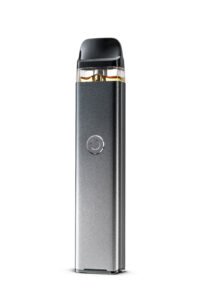When it comes to maintaining a smooth and efficient plumbing system, understanding the differences between drain unblocking and drain repair services is crucial. Both services play pivotal roles in ensuring your drainage system functions properly, but they serve different purposes and employ distinct methods. In this article, we will explore these differences, provide insight into when each service is needed, and highlight the importance of tank environmental solutions in managing drainage issues effectively.
Purpose of Drain Unblocking
Drain unblocking is a service primarily focused on removing obstructions within the drainage pipes that prevent the normal flow of water. These blockages can be caused by various factors, such as accumulated grease, food particles, hair, soap residue, or even foreign objects that accidentally find their way into the drains.
The main goal of unblocking is to restore the flow of water quickly and efficiently. This is typically a less invasive process compared to repair and can often be resolved without the need for extensive work or disruption to your property. Tank environmental approaches to unblocking focus on sustainable practices, using eco-friendly methods and materials to clear blockages without harming the surrounding environment.
Purpose of Drain Repair
In contrast, drain repair services are necessary when there is physical damage to the drainage system. This can include issues such as cracks, leaks, collapsed pipes, or joint displacements. These problems are typically more severe than simple blockages and require more comprehensive interventions to ensure the integrity and functionality of the drainage system.
Repair services aim to fix the underlying structural issues that could lead to significant problems if left unaddressed. This might involve replacing sections of the pipe, sealing leaks, or reinforcing weak areas of the drainage system. Incorporating tank environmental techniques in repairs can enhance durability while ensuring minimal environmental impact.
Methods Used in Drain Unblocking
The methods used for drain unblocking are often straightforward and aim to clear obstructions swiftly. Common techniques include:
- Plunging: A simple and effective method for minor blockages, using a plunger to create a vacuum and dislodge debris.
- Drain Snakes or Augers: These tools reach deeper into the pipe to break up and remove blockages that are further along the system.
- Hydro Jetting: Using high-pressure water jets, this method clears stubborn blockages and cleans the inside of the pipes simultaneously.
- Chemical Drain Cleaners: Though effective, these should be used sparingly due to potential environmental harm. This is where tank environmental practices favor biodegradable or less harmful substances.
Methods Used in Drain Repair
Drain repair requires more specialized techniques to address structural issues, such as:
- Pipe Relining: A non-invasive method that involves inserting a resin-coated tube into the existing pipe, which hardens to form a new lining.
- Excavation and Replacement: For severely damaged pipes, sections may need to be excavated and replaced, ensuring long-term reliability.
- Pipe Bursting: This method involves breaking the old pipe while simultaneously pulling a new one into its place, minimizing excavation.
- CCTV Inspections: Advanced camera technology is used to diagnose and locate the exact nature of the damage, facilitating precise repairs.
When to Choose Drain Unblocking ?
You should opt for drain unblocking services when you notice symptoms of a blockage, such as:
- Slow draining sinks or bathtubs
- Unpleasant odors emanating from drains
- Gurgling noises from pipes
- Water backing up into other drains when using plumbing fixtures
These issues typically indicate a blockage that can be resolved through unblocking services without the need for extensive repairs.
When to Choose Drain Repair ?
Drain repair services are necessary when you experience:
- Repeated blockages that recur after unblocking
- Visible signs of water damage or leaks
- A sudden drop in water pressure
- Structural changes like subsidence near drainage areas
These situations suggest there is a more serious problem with the drainage system that requires repair to prevent further damage and ensure long-term functionality.
The Role of Tank Environmental
Whether you are dealing with unblocking or repair, tank environmental offer innovative and sustainable approaches to manage drainage issues. These solutions prioritize eco-friendly methods, such as using non-toxic chemicals, recycling materials, and employing advanced technology to reduce environmental impact.
By integrating tank environmental practices, property owners can ensure their drainage systems are maintained with minimal harm to the surrounding ecosystem. This not only enhances the efficiency and reliability of the drainage infrastructure but also aligns with broader goals of sustainability and environmental responsibility.
Conclusion
Understanding the key differences between drain unblocking and drain repair services is essential for maintaining an efficient and reliable plumbing system. While unblocking addresses immediate obstructions, repair tackles more significant structural issues. By recognizing when each service is needed and adopting tank environmental solutions, property owners can ensure their drainage systems are not only functional but also environmentally sound. Prioritize quality and sustainability in your drainage maintenance to protect both your property and the planet.










